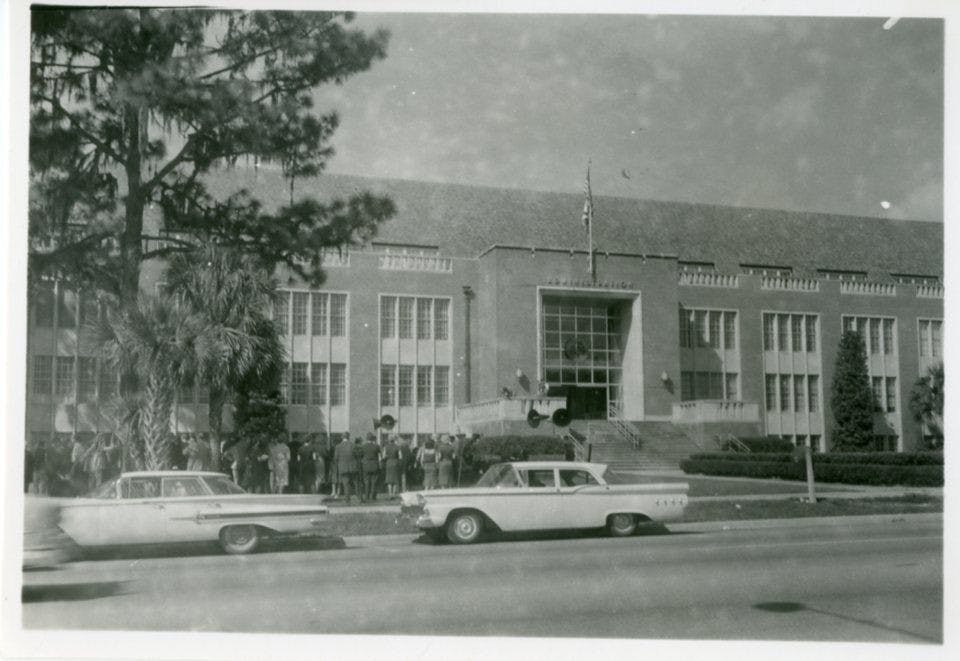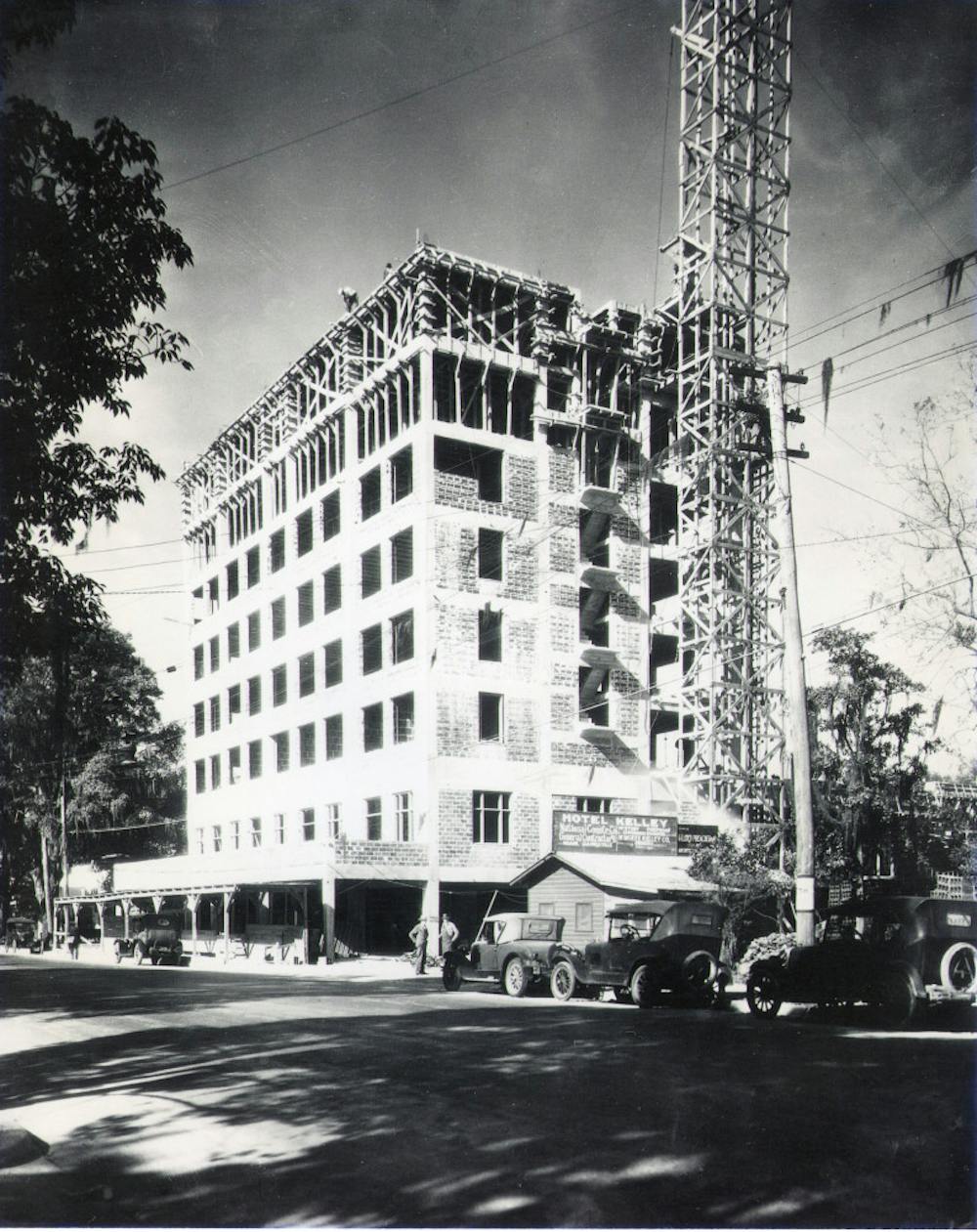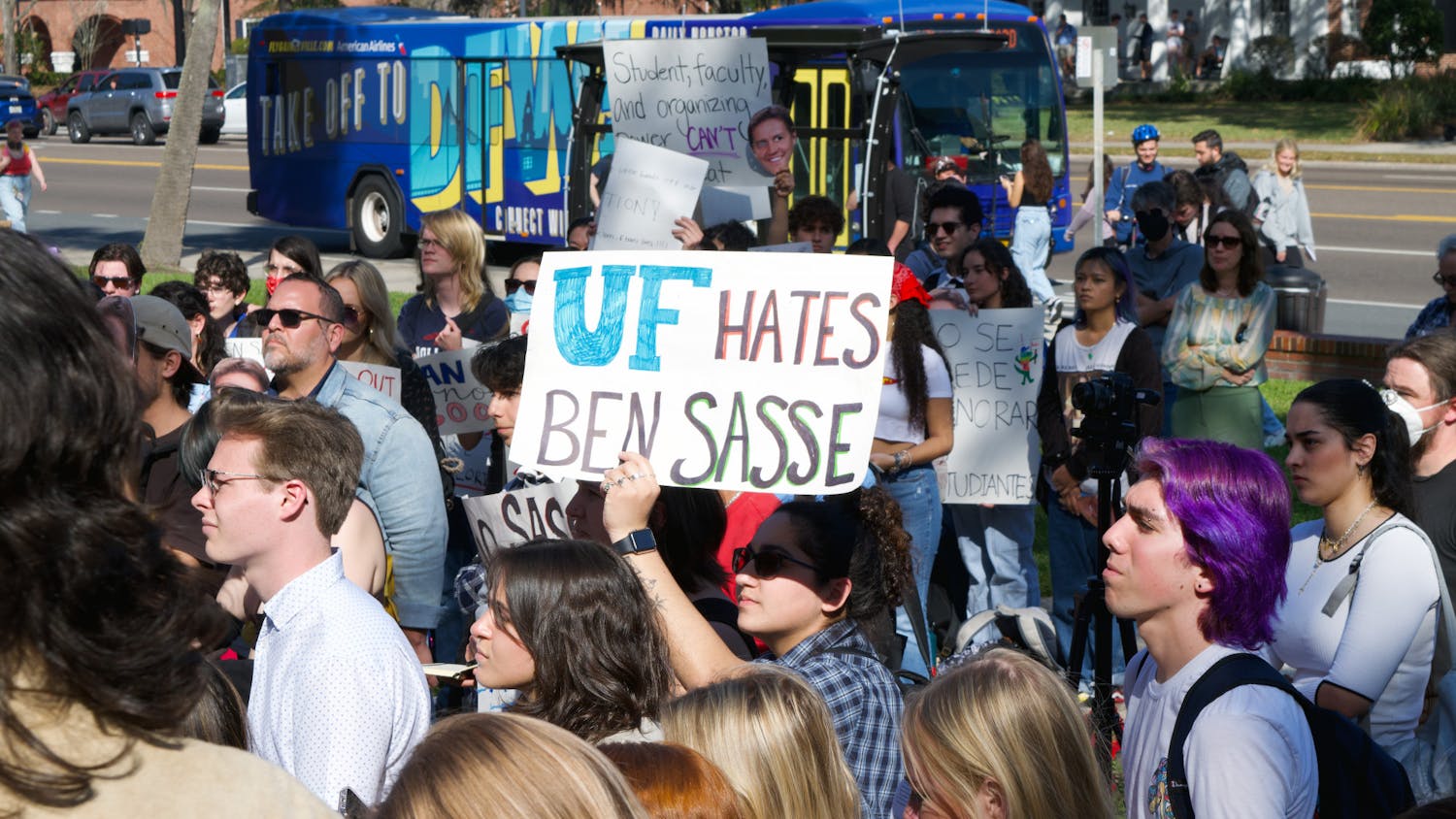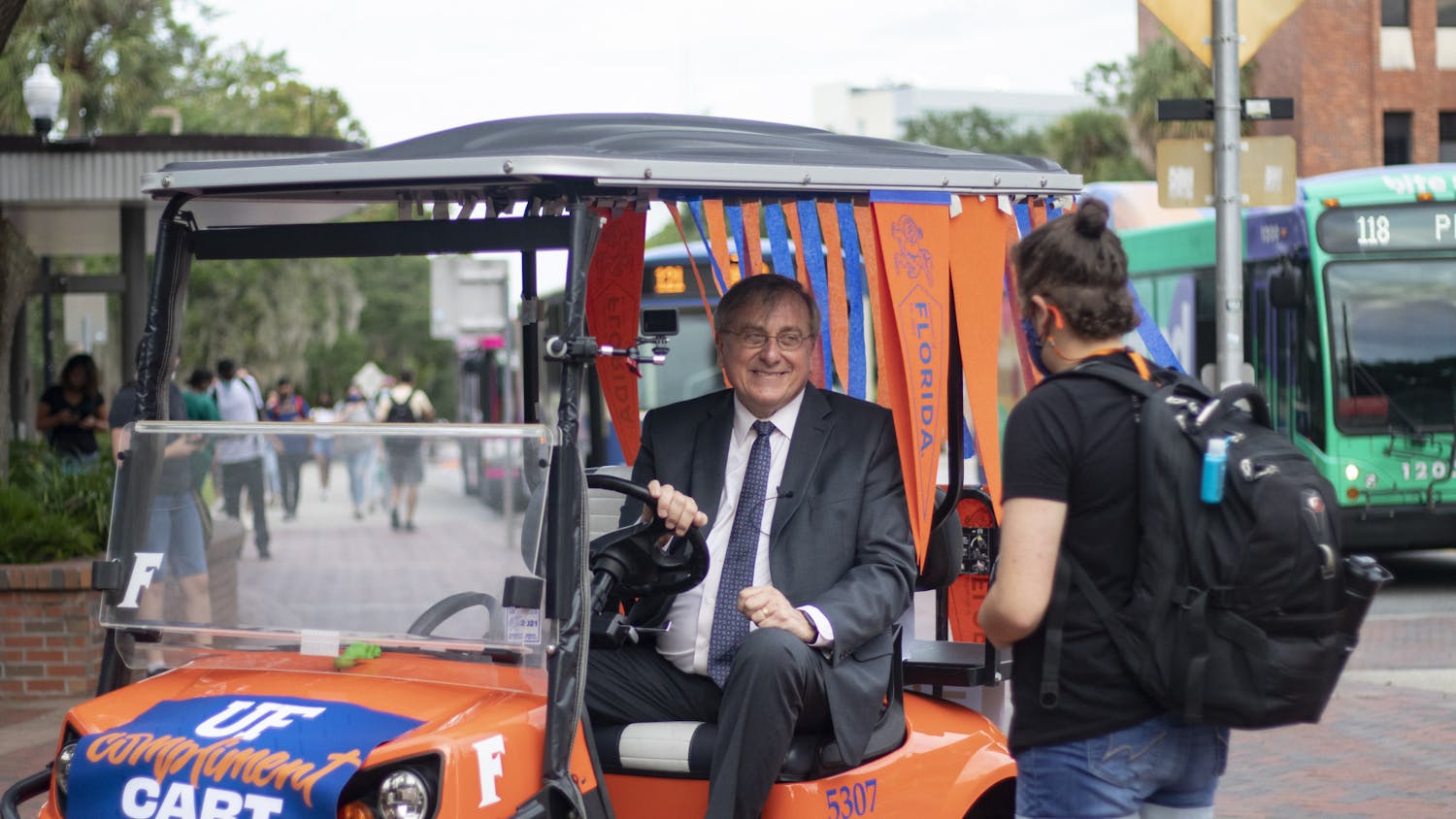Decades ago, a half-built hotel was completed and used for government research. A successful hardware store is now home to a local music venue.
For The Alligator’s “Who is Gainesville’s Project?,” a project about Gainesville’s identity and relationship with UF, we looked into Gainesville’s architecture to understand years of tradition and change in the city.
Beyond the growth of city development and population, Gainesville is home to several buildings on the National Register of Historic Places, both on and off the UF campus.
These buildings, including the Seagle Building, Baird Hardware Company and Tigert Hall, are establishments that have stood through Gainesville and UF’s growth and change.
Seagle Building
West University Avenue is home to a building that sat half-built a century ago.
The Seagle Building, at 408 W. University Ave., houses both retail shops and residential apartments. It’s been owned by different groups and individuals, but never by its namesake.
The building was originally set to be named the Hotel Kelley. It was built during the Florida Land Boom of the 1920s, a period of substantial growth in Florida real estate, said Kaitlyn Hof-Mahoney, the curator of collections of the Matheson History Museum in Gainesville.
However, the Great Depression brought construction to a halt until 1936, Hof-Mahoney said.
“One of the really interesting things is how the Seagle building stood half built as a monument to failure for almost a decade,” she said.
Georgia Seagle, an entrepreneur, bought the building in the mid-1930s, Hof-Mahoney said.
She gave it to UF on the condition that it be named after her late brother, John F. Seagle, Hof-Mahoney said.
During her time in Gainesville, she rented out a house to students, now called Georgia Seagle Hall, Hof-Mahoney said.
The Seagle Building served a lot of functions since 1936 including residential, commercial and research functions. Starting in the early 1940s, UF’s electrical communications lab conducted research from the top floors for the U.S. Department of Defense, Hof-Mahoney said.
The building also housed the Florida Museum of Natural History before it relocated to its current location, Hof-Mahoney said.
When David Holbrook purchased the penthouse of the Seagle Building, he learned about the role it served in World War II.
“When I first bought the penthouse in the late ‘90s, older folks in Gainesville would approach me and say, ‘Hey I used to spot aircrafts from the balconies of the Seagle Building,’” he said. “I thought this story very incredulous at first, but it turned out to be true.”
The War Department developed proximity fuses that were used against the Kamikaze attacks during World War II, Holbrook said.
The city of Gainesville condemned the building in the 1980s and the university returned the building to the city, said Holbrook, the current owner of the Seagle Building. A Kentucky developer purchased the building for $1,000 in 1981 and refurbished it.
The first six floors were later purchased by a woman from Vero Beach, Florida, and subsequently by Holbrook’s family.
“Keeping the water where it’s supposed to be and making sure the pipes and roof are tight — that’s pretty much my job,” Holbrook said.
A portrait of the building’s namesake hangs in the penthouse of the Seagle Building, which is in the Department of Interior’s National Register of Historic Places.
“He is a very kind looking man,” he said. “John F. Seagle was a Gainesville resident with a very generous sister.”
Baird Hardware Company Warehouse
Heartwood Soundstage is home to music and Gainesville concerts, but more than half a century ago, it was a home to tools and machinery.
Baird Hardware, 619 S. Main St., opened in 1890 on courthouse square, Hof-Mahoney said. It was moved to a larger building in 1924. Eberle Baird, one of the two brothers who started the hardware company and a member of a prominent local family, died in 1930 and Cicero Addison Pound Sr. took over the hardware company.
Pound Sr. brought the company to its most successful point, she said. In 1950, the company employed more than 100 people, and it was completing retail sales, as well as wholesale distribution for a large portion of North Central Florida, bringing in about $4 million per year.
Pound Sr. started working at the store when he was a teenager, sweeping floors for $1 per week, said Al Alsobrook, a former vice president for university and government relations. Alsobrook’s wife is the granddaughter of Pound Sr.
Addison Pound Jr., Alsobrook’s father-in-law, took over after Pound Sr. died. Pound Jr. was one of the first aircraft carrier pilots in the 1930s, Alsobrook said. He also laid out the grid for the search for Amelia Earhart.
The Baird Hardware downtown store closed in 1967 after corporate stores like Walmart and Lowe’s Home Improvement came to Gainesville and took business, he said.
“The appeal of a local hardware store went away when all the big boxes came in,” Alsobrook said.
The Baird legacy remains in Gainesville in multiple ways. Some of the brick at Bo Diddley Plaza is from the hardware store’s original downtown location, Alsobrook said. The Baird Hardware Company is now on the U.S. National Register of Historic Places.

Tigert Hall
The administrative building located on 13th Street was renamed its current namesake in 1960, after a president of UF who served from 1928 to 1947.
John J. Tigert was invested in improving UF’s academics, athletics and standards, said Peggy McBride, the University Archivist.
During his presidency, pre-law courses were implemented in the College of Arts and Sciences; the School of Architecture was separated from the College of Engineering; he founded the Bureau of Economics and Business Research, which still exists today; and the university did research that benefited the state’s agriculture.
Tigert built UF’s first football stadium through a private loan that was backed by 50 businessmen in Gainesville, McBride said. He is in the college football Hall of Fame for helping to create the SEC and establishing scholarships for college football players.
“He was well liked within the community because he was honest and straightforward, but kind,” McBride said.
Prior to serving as UF’s president, Tigert was the Commissioner of Education under Presidents Warren Harding and Calvin Coolidge, McBride said. After his UF term, Tigert served on the Indian Higher Education Commission, setting up India’s higher education system. The reforms that he helped institute are still used today.
“He really wanted this institution to become a preeminent institution within the country,” McBride said.
Correction: The article was updated to reflect that Al Alsobrook is the former vice president for university and government relations, and his wife's father was called Addison.
The Seagle Building was built in the 1920s, but construction was resumed in 1936 after delays caused by the Great Depression. It never served as a hotel, despite being built for this purpose.






